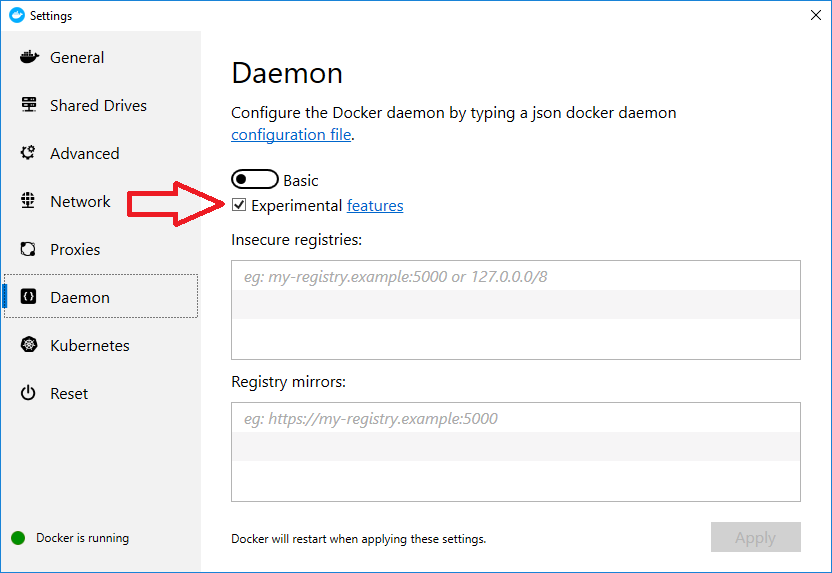


- #DOCKER FOR MAC INSECURE REGISTRY INSTALL#
- #DOCKER FOR MAC INSECURE REGISTRY SOFTWARE#
- #DOCKER FOR MAC INSECURE REGISTRY FREE#
Alternatively, you can use the –ucp-ca option which will let you specify the UCP CA certificate directly. If you’ve set up UCP with TLS certs which are trusted by your system, you can omit the –ucp-insecure-tls option. NOTE: Both UCP and DTR by default come with their own certs which won’t be recognized by your system.
#DOCKER FOR MAC INSECURE REGISTRY INSTALL#
Use the command: # Pull and run the DTR bootstrapperĭocker run -it –rm docker/dtr:latest install –ucp-insecure-tls The bootstrap image is a tiny, self-contained installer which connects to UCP and sets up all of the containers, volumes, and logical networks required to get DTR up and running. Since this is a single-node instance, we’re going to stick with the default local storage.įirst we need to pull the DTR bootstrap image. If you were setting up your DTR for production use, you would likely set things up in High Availability (HA) mode which would require a different type of storage such as a cloud-based object store, or NFS. We’re going to install a simple, single-node instance of Docker Trusted Registry.

Inside of UCP, click on Admin Settings -> Cluster Configuration and change the Controller Port to something like 5443.
#DOCKER FOR MAC INSECURE REGISTRY FREE#
If you’ve got a UCP swarm with more than one node, this probably isn’t a problem because DTR will look for a node which has the required free ports. Since this is a single node cluster, DTR and UCP are going to want to use the same TCP ports for running their web services. Once you’ve got licensing squared away, you’re probably going to want to change the port which UCP is running on. If you don’t, visit the Docker Store and pick up a free, 30-day trial. If you have already have a Docker Enterprise Edition license, go ahead and upload it through the UI. There should be a link to it at the end of your log output. Open up your browser against the UCP instance you just installed. Once UCP is up and running, there are a few more things you should do before you install DTR. On your docker host, run the command: # Pull and install UCPĭocker run -it –rm -v /var/run/docker.sock:/var/run/docker.sock –name ucp docker/ucp:latest install If you’ve already got your own UCP cluster, you can skip this step. Setting Up Docker Enterprise Editionĭocker Trusted Registry runs on top of Universal Control Plane (UCP), so to begin let’s install a single-node cluster. The steps to get started with your own installation are below. You can get started with it today through our free hosted demo or by downloading and installing the free 30-day trial.
#DOCKER FOR MAC INSECURE REGISTRY SOFTWARE#
In the next few weeks, we’ll go over how DTR is a critical component of delivering a secure, repeatable and consistent software supply chain. This is particularly true if you have images with proprietary licenses, or if you have a complex continuous integration (CI) process for your build system.ĭocker Enterprise Edition includes Docker Trusted Registry (DTR), a highly available registry with secure image management capabilities which was built to run either inside of your own data center or on your own cloud-based infrastructure. Docker Hub is Docker’s cloud-based registry service and has tens of thousands of Docker images to choose from. If you’re developing your own software and creating your own Docker images though, you’ll want your own private Docker registry. If you’ve already been using Docker, you’ve almost certainly pulled images from Docker Hub. One of the things that makes Docker really cool, particularly compared to using virtual machines, is how easy it is to move around Docker images.


 0 kommentar(er)
0 kommentar(er)
